Hi everyone,
This past week was pretty crazy.
I got my first fukusa from my tea teacher (but still managed to get lost on the way home)! This is pretty much the most important thing you can have when practicing tea, and was also the thing I needed help with buy the most. Starting to feel better and better about practice. Although I kept forgetting steps, I heard the other ladies whispering that I had beautiful hands and that I made a really good bowl of tea. Good thing I did, too; I served it to the man who owns the tea utensil shop where sensei bought the fukusa.
That was eclipsed a little bit by my program-wide field trip to Kurashiki, Hiroshima, and Miyajima–and then my art class field trip to Daitokuji. I think I’ll mostly talk about those trips in this blog post.
Our bus stopped at Kurashiki on the way to Hiroshima for lunch and a stretch. Kurashiki is sometimes called the “Venice of Japan” because of it’s many waterways and well-preserved buildings. I loved the waterways and the buildings (and the food), but my favoraite experience there was actually going to an art museum. A Western art museum.
To be fair, I went to the first Western art museum ever established in Japan: Ohara. I don’t normally like walking around in art museums. It’s usually a bit boring for me and I end up feeling guilty for some reason (shouldn’t I be enjoying this? I’m cultured, I promise!). This art museum literally took my breath away. And the funny part was, it wasn’t even because of the pieces themselves. Yes, there were Picassos and Cezannes and Monets, but that’s not really what excited me. It was how they were arranged. It was the fact that, sometimes, you could see a Picasso and a Cezanne and Monet all next to each other!
A friend of mine was annoyed that it seemed like an odd mishmash of pieces and artists that appeared to be assembled at random. There were authors from entirely different schools in the same room, and pieces painted in a style that was very unusual for a particular artist. But that’s what was interesting for me. I never knew what was coming up next. I would walk to the next piece of art and be genuinely stunned. The technique or the palate would be so different. You didn’t need to be an art aficionado to figure that out.
But what was really crazy was that each of the pieces went with each other. Even though they were so different, they all went with one another. I thought at some point I would be so jarred by a pairing that it wouldn’t be appealing anymore, but I always ended up thinking, “Huh! Of course! I never would have guessed these would go so well together!” Each painting resolved the last one and prepared you for the next one.
The museum was a assemblage of pretty much one curator’s personal collection, but it wasn’t at random. By the end, the entire exhibit became the art piece–not just the pieces within it. It was an experience. A professor back at Whitman told me that I should try to make a friend with one piece of art every time I went into an exhibition. If you came again, you could make another friend. That way you could avoid being overwhelmed by everything and become apathetic. Because of how this museum was set up, I may have been a bit overwhelmed, but far from apathetic. I couldn’t help but make more than a few friends. The three I remember are Cezanne’s “Landscape,” Segantini’s “Midday in the Alps,” and another called “Red Room,” but whose painter I forget.
That experience reminded me of what I’m learning about in my Japanese film class. The cuts and editing in some Japanese movies may seem non-nonsensical at first, but it’s just a different way of arranging the piece of art. I’m interested in this sort of thing, so I might think about it for a future paper or thesis…
I had been to Hiroshima before, but it was nice to see it again. Hiroshima is famous for its unique okonomiyaki, delicious oysters, and for being bombed.
A couple of friends and I went out for okonomiyaki on Wednesday. It was delicious. The guy was hilarious, too. Is it better than Kyoto okonomiyaki? It’s different. I’ll leave it at that because I still want to have friends in Kyoto.
The Peace Memorial Museum and the Peace Memorial Park is still the best memorial I’ve ever been to. The museum especially is amazing. Although Genbaku Dome is definitely the most visually striking.
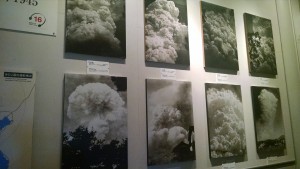
The first-person shot of the mushroom cloud from the ground has a very different affect then the shot from the sky we almost always see.
Later, a survivor of the atomic bomb told us her story–and in English, which was a nice surprise. She didn’t talk very much at all about her memory of the bombing, and instead thanked us for coming, because this was the first step towards making a more peaceful world. That’s what’s always so powerful about this museum: it’s not really about the past, it’s about the present and the future.
Miyajima was beautiful. It’s hard to describe. The whole island is a UNESCO World Heritage Site. A couple friends and I hiked up Mt. Misen for about 3 hours and found a shrine at the top. It’s best described through pictures.
On Sunday, my art class went Daitokuji’s mushiboshi, or “airing of the bugs.” It’s basically when all the monks take out the scrolls and the tapestries and unfurl them so that they can breathe. That way they can check for damage by insects or humidity as well.
It also offers a very special occasion, once a year, to see absolutely priceless tapestries and art. There are scrolls that are conversations between the founders of Zen Buddhism in Japan, and 600+ year old paintings from China. It was all a bit overwhelming for me. I couldn’t believe what I was looking at. It was hard to make friends.
After I looked over the main rooms, I went and prayed for Sen no Rikyu in front of some calligraphy of his. Sen no Rikyu is the one who standardized tea ceremony in Japan, almost 400 years ago. All three major schools of tea are directly descended from him. Although my school is one of the very few that aren’t descended from Sen no Rikyu, it was a no-brainer to go pray for him. Besides, the founder of my school and Sen no Rikyu were classmates under the same teacher.
Then I went to some gardens, because Daitokuji has some of the most amazing moss and bamboo gardens in Japan.
Then I wandered into Daisen-in, which has one of the most famous Zen gardens in Japan. This is all still within Daitokuji, mind you. At the front of the temple, an old monk told me in English that I looked very handsome and I must be a movie star. I got a thumbs-up too. All the people working at the temple giggled a little bit. This probably wasn’t the first time he told someone that, but I still felt special.
After looking around the grounds, I noticed that there were some tea ceremony utensils in one of the buildings, but it was closed off to the public. I asked if I could look inside if someone accompanied me, and the said, “Of course! Follow me!” The guide who took me there spoke to me mostly in Japanese, but she had a question about the phrase “silvertongue” in English. She asked if it was a common phrase. I assured her it was and she looked relived. She’s probably had to use it with a couple other tourists before to explain the curator or the tearoom, who she assured me was a silvertongue. In the tearoom, I told her that I was practicing tea ceremony and she was genuinely surprised. I told her it was Yabunouchi, and she was even more surprised. I thought she wouldn’t know about it since it’s such a small school, but then I remembered that Yabunouchi has strong ties to Buddhist temples in Japan, and especially in Kyoto.
On the way out I assured her again that silvertongue was a commonly used phrase. To drive the point home, she pointed to the monk that I met at the front of the temple and said, “He’s a silvertongue.” I said yes, that’s exactly right. We laughed and it was great.
The last thing I did at Daitokuji was visit Oda Nobunaga’s grave. Oda Nobunaga is the equivalent of the US’s George Washington, but more legendary. His gravesite was open to see for just that one day, so I decided to go and see it when I had the chance. I quickly became lost despite charming an elderly Japanese woman with my broken Japanese (or perhaps, because). Luckily, I bumped into an equally confused Japanese man who I also charmed with my broken Japanese. Together, we walked around and asked for directions, and together we found Oda Nobunaga’s grave. Crazy stuff. We said an awkward goodbye, and I walked back to the train station.
One way or another, it seems like things are only worthwhile if you make friends. If you’re overwhelmed, it’s nice to remember that a person will do in place of a painting.
Next Monday is my birthday! I plan to go out with friends on Friday for karaoke, and then go to a Jazz bar on Monday that one of my professors recommended. Kyudo is still up in the air, but I think I’d like to try it this Saturday. Wish me luck.
Best,
Jesse
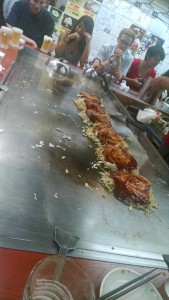

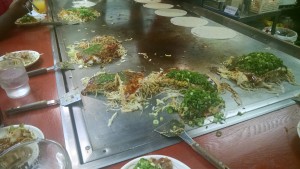
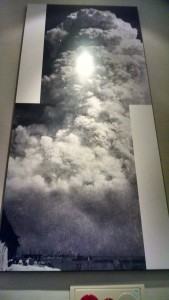
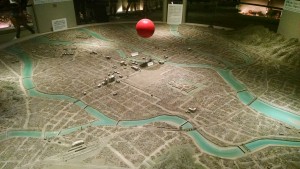
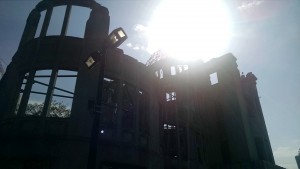


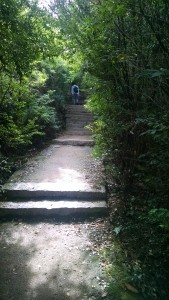

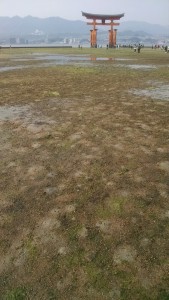
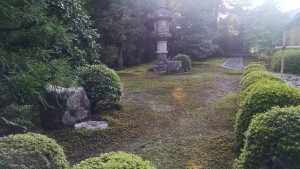
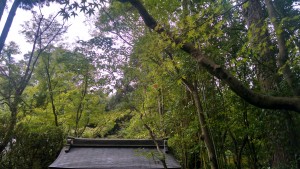

Hi Jesse. I just read all the blogs and it was such fun. I love that you are sharing these amazing experiences. You are an engaging writer, plus I am learning things. Great pictures too, especially of gardens. I am wishing many more good times being lost. Hugs, karen